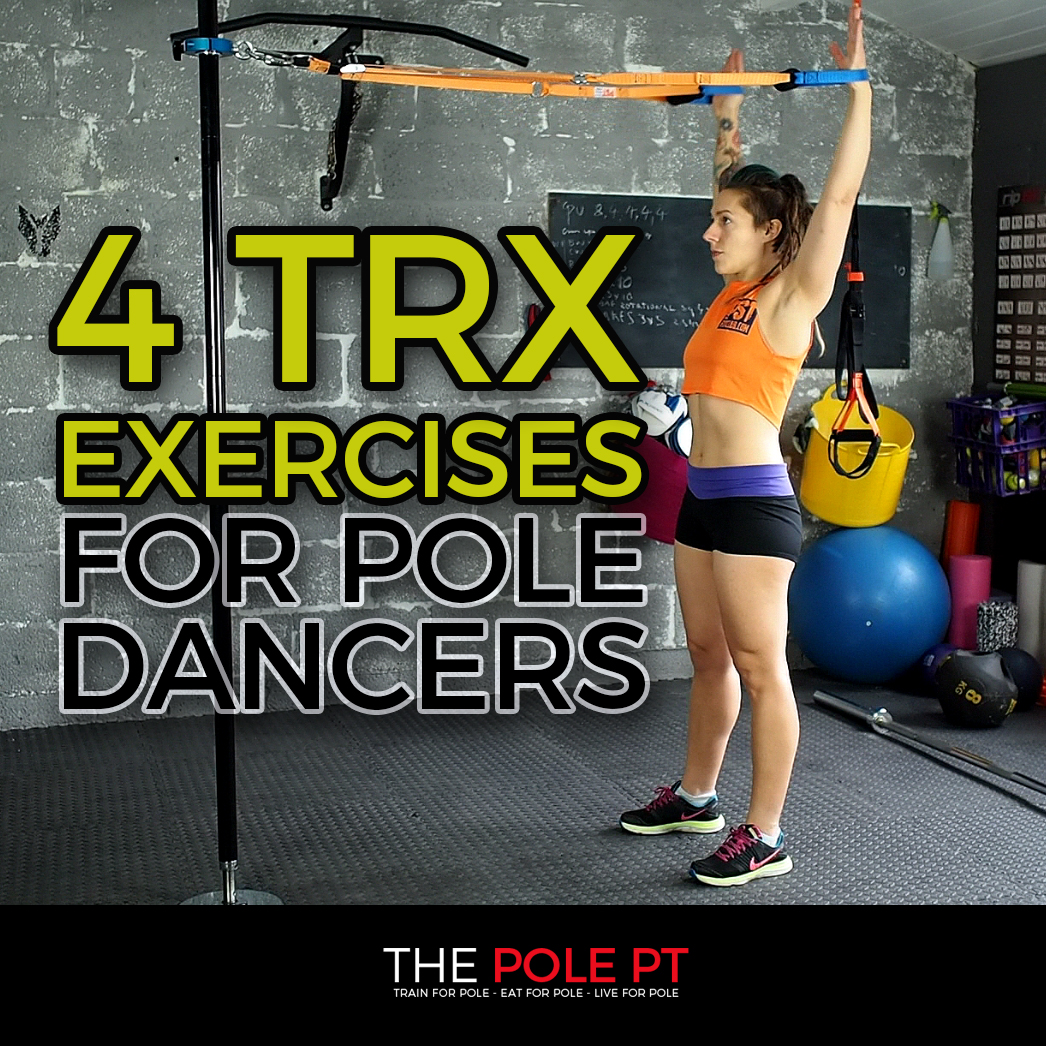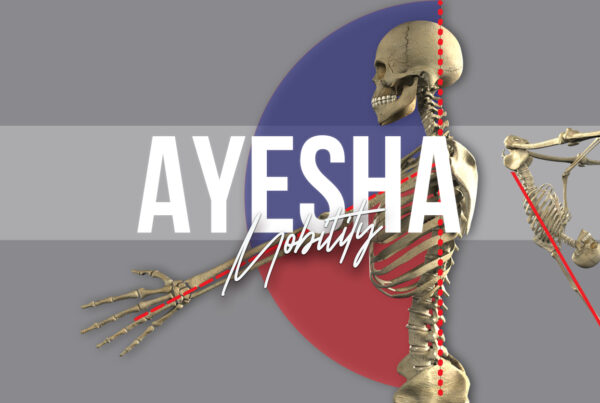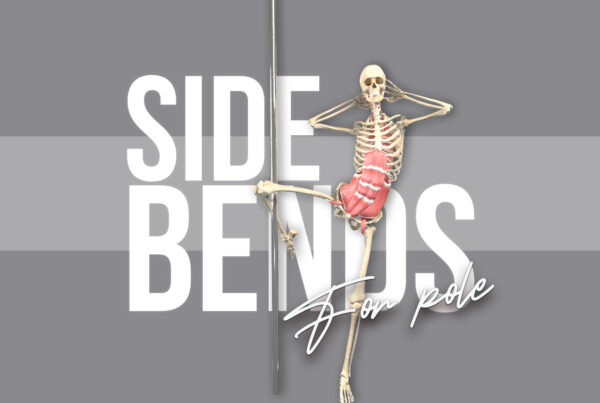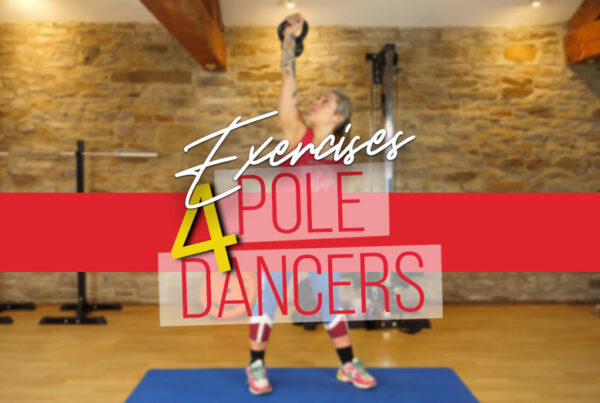Put a pole dancer in the gym and, like Jaws sensing a drop of blood in the ocean from 5 kilometres away, we’ll immediately gravitate towards the pull up bars and the suspension trainers hanging from the ceiling. We just can’t help it.
There’s something comfortingly familiar about dangling from a metal bar or suspending ourselves in the air on some straps that makes the ‘functional training’ section of the gym much more appealing to polers than the weights and cardio machines.
But other than pulling up and tipping back into an Inverted-V to wow everyone in the gym with our impressive inversion skills and awesome spreadies to the Gods, there are many more conventional but super effective ways we can use suspension trainers to improve our pole skills.
Why is suspension training so awesome for polers?
Machines at the gym work often work isolated, individual muscle groups, usually from a seated or lying position. This is useful for building strength in those isolated muscle groups and that kind of training definitely has it’s purpose, but it doesn’t usually have a direct translation to what we do on the pole.
Suspension training, on the other hand, uses your own suspended bodyweight and gravity as resistance. This is EXACTLY what we do on the pole, so if you’re looking for sport-specific training for pole, it doesn’t come much more functional than this.
And because suspension trainers destabilise any movement we do on them—whether it’s a bicep curl or a plank—we have to constantly engage our core and other joint stabilising muscles to control our movement and stabilise our body against the destabilisation caused by the movement of the straps.
That ability to stabilise our body in unbalanced positions translates directly to our performance on the pole, too.
So, now you know why suspension training is such a great option for pole dancers generally. But let’s get a bit more specific…
3 of my favourite suspension training exercises for polers
I should say that, as well as being a pole instructor and personal trainer, I’m also a certified Group TRX instructor, but, of course, there are other brands of suspension trainers out there – you can do exercises like the examples below on any suspension trainer.
1. One armed power pull
What makes this exercise so great for pole?
There are so many reasons why this is a great exercise for polers. For one thing, it’s a unilateral strength exercise. In other words, only one arm is working at a time, which replicates big time what we do on the pole – our arms are usually never working together to do the same thing, we usually have one arm pushing while the other pulls, etc.
Secondly, the pulling part of the exercise is essentially an inverted row that targets and strengthens the muscles of the upper back which are key to many pole moves and super important for shoulder stability and posture, too.
The rotational element in this exercise is also an important movement for polers to learn and build strength in. We perform rotational movements on the pole alllll the time! For example, twisting down from a Flatline Scorpio into an Allegra, or turning our body from an Ayesha (torso facing the ceiling) to an Iron X (torso facing the audience).
2. Front split sliders
What makes this exercise so great for pole?
I feel like I’m preaching to the choir here, but obviously we do A LOT of front split based movements both on and off the pole. This exercise helps you strengthen your front split flexibility ACTIVELY – this is key to being able to do your spilt moves in the air! Strengthening your hamstrings in this lengthened position is also useful for injury risk reduction (hamstrings have been reported as one of the most commonly injured areas for pole dancers, after shoulders – you can find out more about that here!).
3. Oblique crunch
What makes this exercise so great for pole?
A strong core in general is crucial for even basic inverts and spins—and when we’re planking and crunching away to our hearts content, thinking we’re building the core of Wonder Woman, we tend to neglect specifically training our obliques (the obliques are the muscles that run along the side of our torso, either side of your six pack).
The suspended oblique crunch is a challenging plank-based core exercise that adds an oblique challenge into the mix. It can help build strength for everything from handstands to straight leg inverts, deadlifts and that elusive Iron X.
If you can’t maintain a strong plank position when bringing your knees in to your elbows, you can just hold the plank position instead. With the feet suspended, this in itself is a lot harder than it looks! You can even keep one knee on the floor until you build enough strength to have both feet suspended—and then build up to adding the crunching movement!
The above exercises are just a small selection of the many, many suspension training exercises you can do to help build strength for pole. If you decide to try any of these exercises in your training programme, please make sure you warm up fully first and include a proper cool down and stretch afterwards. As a rough guide, you can aim for 8-10 repetitions, then rest for 30 seconds or so and repeat twice more to make 3 sets in total of each exercise, but make sure you focus on form. Rest and reset your position when you need to.
Want to create your own strength training programme for pole? Check out my book, Strength and Conditioning for Pole – available now in papercopy or downloadable ebook!








